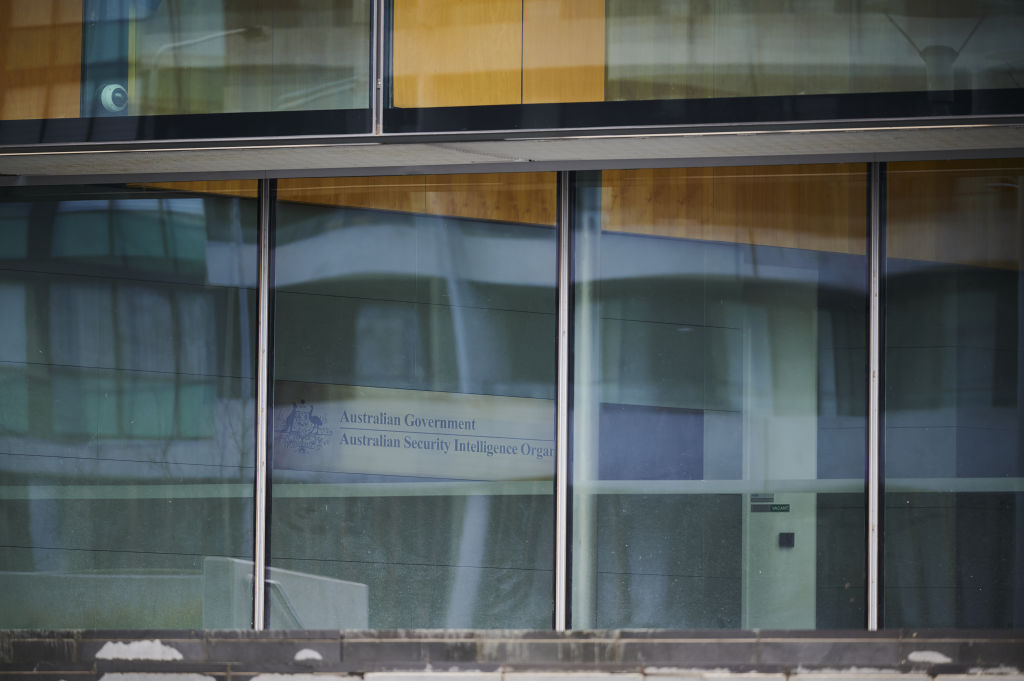The government has warned that terrorist attacks in Australia are once again “probable”. The threat level was lowered to “possible” in November 2022 but had otherwise sat at “probable” since at least November 2015, when the current advisory system was established.
The elevated warning raises questions about how ASIO is going to juggle its workload. ASIO was established during the Cold War to counter Soviet intelligence, but since the terror attacks of 9/11 it has focused mostly on counter-terrorism. ASIO must now pursue both counter-intelligence and counter-terrorism at a time when each threat set is becoming more complex.
China is not the only foreign intelligence service challenging ASIO, and espionage is not the only threat. According to ASIO Director-General Mike Burgess, “at least three or four [countries are] … involved in foreign interference in Australian diaspora communities … some of them are also our friends.”
Violent extremism and foreign intelligence activity are manifestations of a wider national security environment that is more complex than any Australia has faced since the Second World War.
Islamist terrorism is not the only form of violent political extremism threatening Australians. Today’s would-be terrorists are motivated by a bewildering spectrum of issues and beliefs. Burgess warns that some individuals are “combining multiple beliefs to create new hybrid ideologies”.
Burgess signalled a rebalance of ASIO’s work in his February 2022 threat assessment, announcing that “espionage and foreign interference has supplanted terrorism as our principal security concern”. He now says “that is no longer accurate … [and] politically motivated violence now joins espionage and foreign interference as our principal security concerns”.
They can’t all be principal. ASIO must allocate its finite resources against an expanding and more complex array of threats. But ASIO’s lack of clarity about how it will do so is understandable: the big decisions about national security priorities belong to government. The government must decide which threats to focus on and be up front about where it is necessary to accept risk.

The prioritisation challenge is bigger than ASIO. The new forms of both violent extremism and foreign intelligence activity are manifestations of a wider national security environment that is more complex than any Australia has faced since the Second World War. It extends from self-radicalising Australian teenagers through to the rapidly modernising Chinese military. It encompasses intensifying competition between states and transnational issues, especially climate change, that demand more cooperation.
Global disorder will continue presenting Canberra with tougher choices and more of them.
Australia is far from the only country facing this challenge. In the latest edition of Foreign Affairs, Dan Drezner chronicles “How Everything Became National Security” in the United States and warns that “if everything is defined as national security, nothing is a national security priority”.
Politics unavoidably complicates the government’s choices. Terrorism commands disproportionate attention precisely because that’s what it is intended to do. Countries that joined the war on terror are reluctant to acknowledge that terrorism cannot be defeated but must be managed, alongside other threats to national security. That was reflected in the Albanese government’s reported slowness to follow ASIO’s advice and lower the terror threat warning in 2022.
Burgess has pushed discussion of Australian security further into the public realm than any other intelligence leader.
The government sometimes struggles to clearly articulate threats posed by China because Canberra doesn’t want to destabilise the bilateral relationship. It’s often easier to let intelligence agencies describe the threat. In July, the Australian Signals Directorate, together with its international counterparts, detailed the current threat posed by a PRC-sponsored cyber group to Australian and other networks. The 2024 ASIO annual threat assessment all but fingered China as the power directing the “A-Team”.
Australia’s national security bureaucracy can better help government assess and articulate the threats.
To assess the complex new environment, Australian agencies must make the most of the digitally-driven explosion of open-source information. Burgess has indicated that the new terrorism assessment is based less on secret intelligence and more on the growth in “anti-authority” beliefs, eroding trust in institutions and the normalisation of provocative and inflammatory behaviours. That’s hard to contest, but it’s far from clear that ASIO, operating behind a barrier of secrecy, is any better equipped to assess these social trends than researchers working more openly or, ideally, in a new Open-Source Intelligence Agency.
To his credit, Burgess has pushed discussion of Australian security further into the public realm than any other intelligence leader, especially by instituting his annual threat assessment. The Director General of the Office of National Intelligence (ONI) should also deliver an annual public report, just as his US counterpart does. ONI leads Australia’s National Intelligence Community and is legislatively required to prepare assessments on “international matters that are of political, strategic or economic significance to Australia”.
At the very least, such assessments would significantly improve public understanding of national security challenges and choices. At best, they would underpin a national security strategy. Drezner, for his part, is sceptical about the value of US national security strategies, but argues that Washington could still better “sort national security issues by timescale and degree of urgency” as well as specifying whether they demand “proactive measures, defensive responses, or a mix of both”.
Canberra should follow these guidelines when speaking to the Australian public about what it is doing to strengthen national security, but also articulate which risks people must learn to live with.

